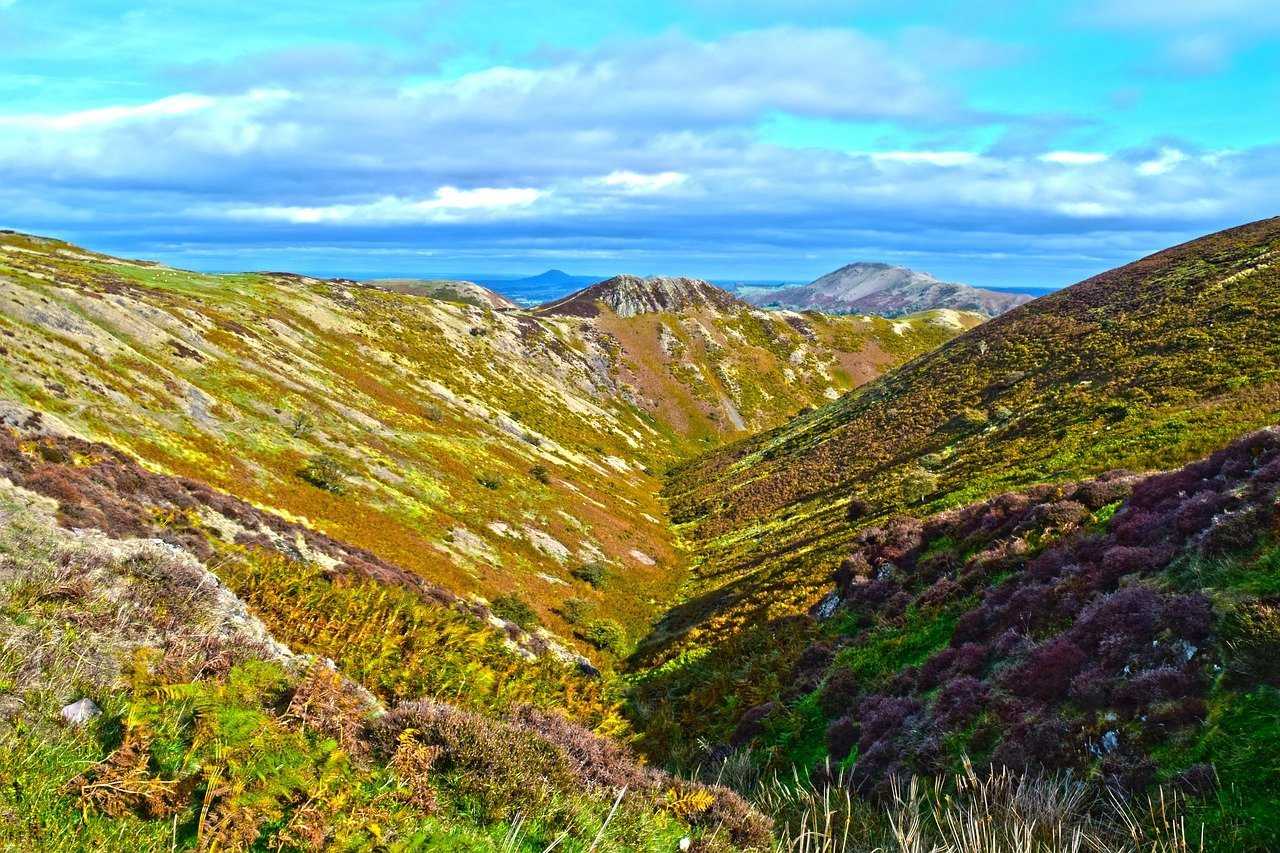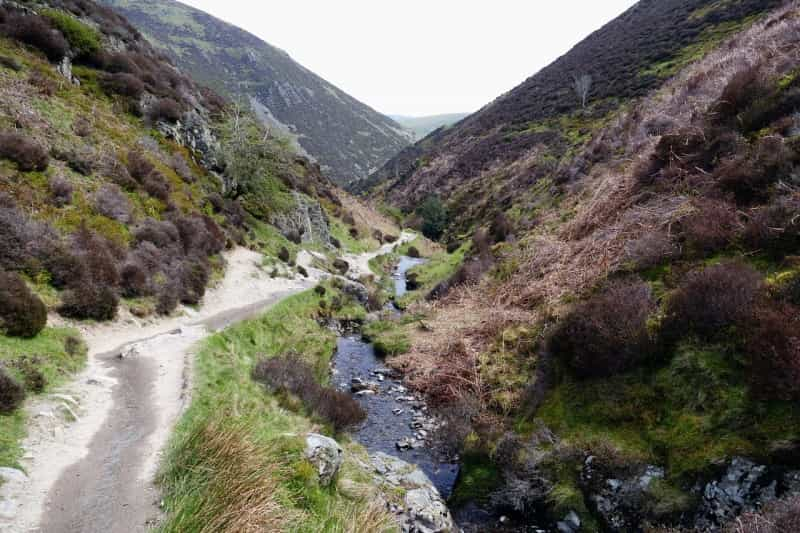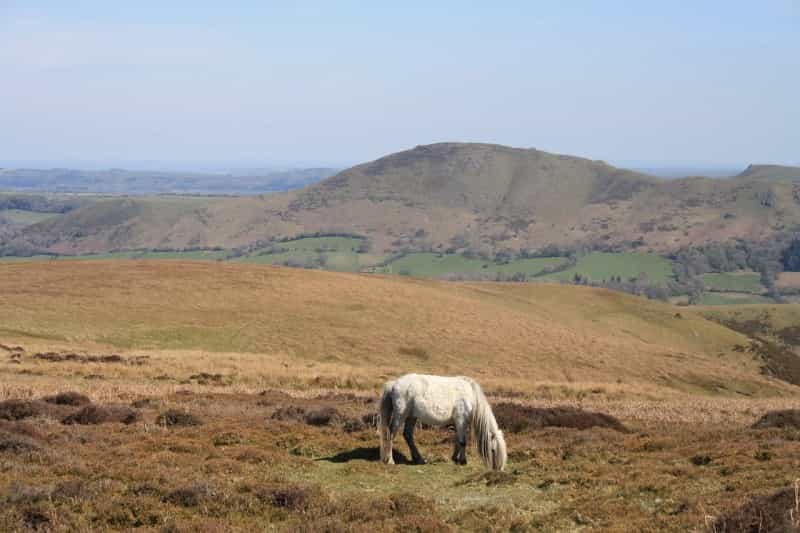8 Of The Best Shropshire Hill Walks
The best way to explore Shropshire is on foot – and to do that, you need to know where the best Shropshire hill walks are.
The Shropshire Hills has been designated as an Area of Outstanding Natural Beauty and it’s not hard to see why when you arrive here. The best way to explore is on foot – and whether you choose to climb the peaks, wander through meadows full of wildlife or explore historical landscapes dotted with Iron Age forts, the Shropshire Hills have something for you.
Here’s our pick of the best walks in the Shropshire Hills that can be done in a day.

Wenlock Edge
A thousand-year-old pub after a steady hillwalk
Want to stretch your legs with a steady uphill climb? Head out to Wenlock Edge for a four-and-a-half-mile hike up a limestone escarpment and through the quiet valley of Ape Dale.
In the early part of your walk, you’ll pass the old railway line that once went from Craven Arms to Much Wenlock, and walk along a scenic woodland ridge before descending along an often muddy path.
Start and finish this walk at The Plough Inn in Wall under Heywood. This Shropshire pub has been serving customers for over 1,000 years, so it’s only right to continue tradition by stopping in for a drink.
Find more of the best pubs in Shropshire.
Caer Caradoc
Stunning views and historic sites
Take a three-and-a-half-mile walk up to the summit of Caer Caradoc from the village of Church Stretton for views across to Wenlock Edge and The Wrekin. This is a hill that shows the historic value of Shropshire as there’s an Iron Age fort on the top to explore.
After a steep climb to the top you’ll walk across the ridgeline and see Three Fingers Rock, a well-known feature of Caer Caradoc. As you walk back down, watch out for cyclists who also use this bike-friendly track.
Search for the best campsites in Shropshire.
Onny Meadows
An easy stroll out of the Shropshire Hills Discovery Centre
If you’re at the Shropshire Hills Discovery Centre, wander out to the Onny Meadows behind the site and walk down to the riverbank. In spring and summer, there’s a lot of wildlife to see here, especially in the ponds. Take a picnic and sit on one of the benches overlooking these ponds or the river.
The paths around the Discovery Centre are usually wheelchair accessible unless there’s been heavy rain and well-behaved dogs are welcome. Once you’ve learnt a little about the natural history of the area, stop in at the award-winning café for a hot lunch or a bit of cake and coffee.

Long Mynd
One of Shropshire’s most popular hills
Long Mynd is one of the most popular Shropshire Hills and there are a few walks to choose from at this seven-mile ridge of heathland with steep valleys cut into the side. The most popular of these is Carding Mill Valley, which is managed by the National Trust.
In Carding Mill Valley, take the short New Pool Hollow walk to the reservoir, passing millponds as you go. If you want a longer walk, try the Burway Loop to the highest point of Long Mynd for long views over the hills and valleys.
There is Bronze and Iron Age archaeology to discover on Long Mynd, including the hillfort of Bodbury Ring, and wildlife to spot, like the Red Grouse and rare Bilberry Bumble Bees in spring.
See the best Shropshire castles for more history-themed days out
Linley Beeches
A tree-themed walk
Like to wander among the trees? Start from the village of Lydham and stroll out into the quiet Welsh border area to Linley Beeches, a mile-long row of beech trees on Linley Hill. The trees lead to Linley Hall, a Georgian country house.
Walk towards the house between a row of oak trees and stop in the village of Norbury to see the Ancient Yew, one of the oldest trees in Shropshire. After that, you’ll take the Shropshire Way to descend through the peaceful beeches.
Look for campsites near Linley Beeches

Rectory Wood
A gentle walk in landscaped parkland
Want a short walk right from the centre of Church Stretton? Set straight off from the visitor centre into Rectory Wood and Fields, an area that mixes up woods and meadows. There are winding paths and steps to climb up steep hills, brooks to cross and wildflowers during spring.
The area was laid out in the 18th century and was probably influenced by Lancelot (Capability) Brown, who designed some of the UK’s best-known parks. Look out for the remains of buildings like the old grotto, a summerhouse and an icehouse while you’re walking.
Pitch up at campsites near Church Stretton
Ironbridge Gorge
The birthplace of the Industrial Revolution
Need to give your legs a bit of a rest? Go to Ironbridge Gorge to see where the Industrial Revolution started, and take a gentle stroll around the town of Ironbridge with its cafés and traditional shops.
UNESCO recognises the town as the birthplace of the revolution, which started when Abraham Derby became the first mass producer of cast iron in 1708. The cast-iron bridge, another world first, was built here in 1779. Take a walk on Blists Hill, a recreated Victorian town, or go to the Museum of the Gorge to see a scale model of the valley as it was in 1796.
Discover more things to do in Shropshire.
Brown Clee
The highest point in Shropshire
Not inspired by the name? Perhaps the views will be more to your liking – because Brown Clee, at 540 metres, is the highest point in Shropshire. This seven-mile walk takes you through the best of the Shropshire Hills area with sunken lanes, moorland, abandoned industry and Iron Age relics.
Start in Abdon, a hamlet that was a busy farming community in medieval times but was abandoned during a mini ice age. Pass the sites of medieval coal mines as you climb towards the peak of Brown Clee and descend past Nordy Bank, an Iron Age fort where you can still see the steep ramparts.
Search for campsites near Craven Arms.
Want to stay longer in Shropshire and explore the surrounding area? Check out our guide to camping in Central England.

